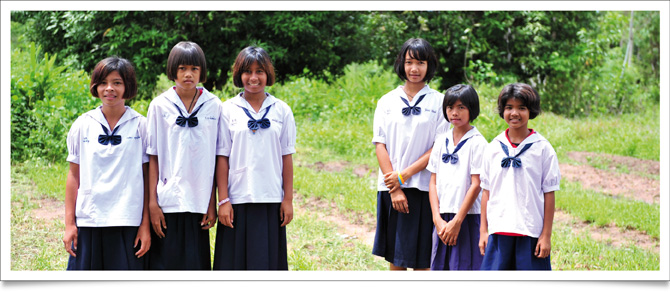
Thailand
Country Profile
| Country’s Name | Kingdom of Thailand |
|---|---|
| National Flag |
 |
| Name of Capital City | Bangkok |
| Number of Population | 71,668,011 (2024) |
| National Language | Thai |
| National Religion | Buddhism |
| Life expectancy at birth (2024 est.) |
Male: 75.2 years
Female: 81.3 years
|
| Literacy Rate | 91.1% (2022) |
| Percentage of People Living under the Poverty Line | 3.41% (2023 est.) |
| Ethnic Minority Groups | Thai 75%, Chinese 15%, other 11% |
| Total Country’s Area | 513,115 sq km |
| Number of Provinces | 77 provinces |
| Seasons/Climate | 3 seasons (summer, rainy season and dry season) |
Education Information
Compulsory Education: 12 years (Kindergarten - Lower Secondary School)
Education Level:
| Level of Education | Years of Studying | Age range of students |
|---|---|---|
| Kindergarten | 3 | 4 - 6 |
| Preparatory/Preschool | 3 | 4 - 6 |
| Primary | 6 | 7 -12 |
| Lower Secondary School | 3 | 13 - 15 |
| High School | 3 | 16 - 18 |
| Vocational School | 3 | Vary |
| University (Bachelor’s Degree) | 4 - 6 | 19 - 24 |
School Year (Primary and Secondary)
| First Semester | 16th May to 11th October |
| Second Semester | 1st November to 1st April |
School Break
| First Semester Break | 12th to 30th October |
| Second Semester Break | 2nd April to 15th May |
Enrollment and Dropout Rate
| Level | Percentage of Enrollment Rate | Percentage of Dropout Rate | |
|---|---|---|---|
| Primary Education | 100 | 1.13 | |
| Secondary Education | Lower Secondary | 99.47 | 2.43 |
| Upper Secondary | 85.79 | 2.16 |
Source of Data: Ministry of Education (2011)
Major Education Issues & Problems
|
1. School Dropout
Disadvantaged people still cannot support their children’s education until their children complete their school due to a lack of income. Although the government has been largely investing in the education sector by promoting free education, the cost of school is still too onerous for many families to handle. As such, many are forced to out of schools in order to work and support their family.
|
|
2. Government Education Inequality
The budget allocated for education in rural areas is much less than that of cities and teachers in these schools also tend to be less qualified.
|
|
3. Quality of Education
The evaluation of the overall quality of education in the rural area (National Examinations) in a primary school, lower secondary school and high school is lower than that of many developing countries, especially in subjects such as Mathematics, Science, English and Social Studies. One of the reasons is an atmosphere in the classroom in which students are not encouraged to learn and think by themselves.
|
|
4. Shortage of Teachers in Rural Schools
Most qualified teachers want to work in a school located in a city, and people who are highly qualified and competent to work in the academic field do not want to become teachers because of the low income associated with such positions. Thus academic institutions inevitably are forced to recruit less qualified personnel. Moreover, according to the school quality assurance system, teachers have to spend considerable time preparing documentation for evaluations, so the time for developing teaching methodology is greatly reduced.
|
Working Areas
 Northern Region 6 Provinces
Northern Region 6 Provinces
Chiang Mai, Chiang Rai, Lamphun, Phrae, Phayao, Uttaradit
North Eastern Region 20 Provinces
Amnatcharoen, Buri ram, Chai yaphum, Khon kean, Kalasin, Loei, Mukdahan, Mahasarakham, Nongbualamphu, Nongkhai, Bueng kan, Nakhon ratchasima, Nakhon phanom, Roi et, Srisaket, Sakonnakhon, Surin, Uboratchathani, Udonthani,Yasothon
Central Region 8 Provinces
Kamphaeng Phet, Nakhon Sawan, Pathum Thani, Phetchabun, Phitsanulok, Phichit, Phra Nakorn Si Ayutthaya, Suphan Buri
Western Region 4 Provinces
Kanchanaburi, Phetchaburi, Prachuab Khiri Khan, Ratchaburi
Eastern Region 1 Provinces
Chachoengsao
Southern Region 5 Provinces
Pattani, Narathiwat, Songkhla, Yala, Satun
Total 44 Provinces
Scholarship Program's Achievements
Chart 1 - Accumulative Number of Target Schools
| Year | Number of School |
|---|---|
| 1988 - 2024 | 5,799 |
Chart 2 - Accumulative Number of Scholarships
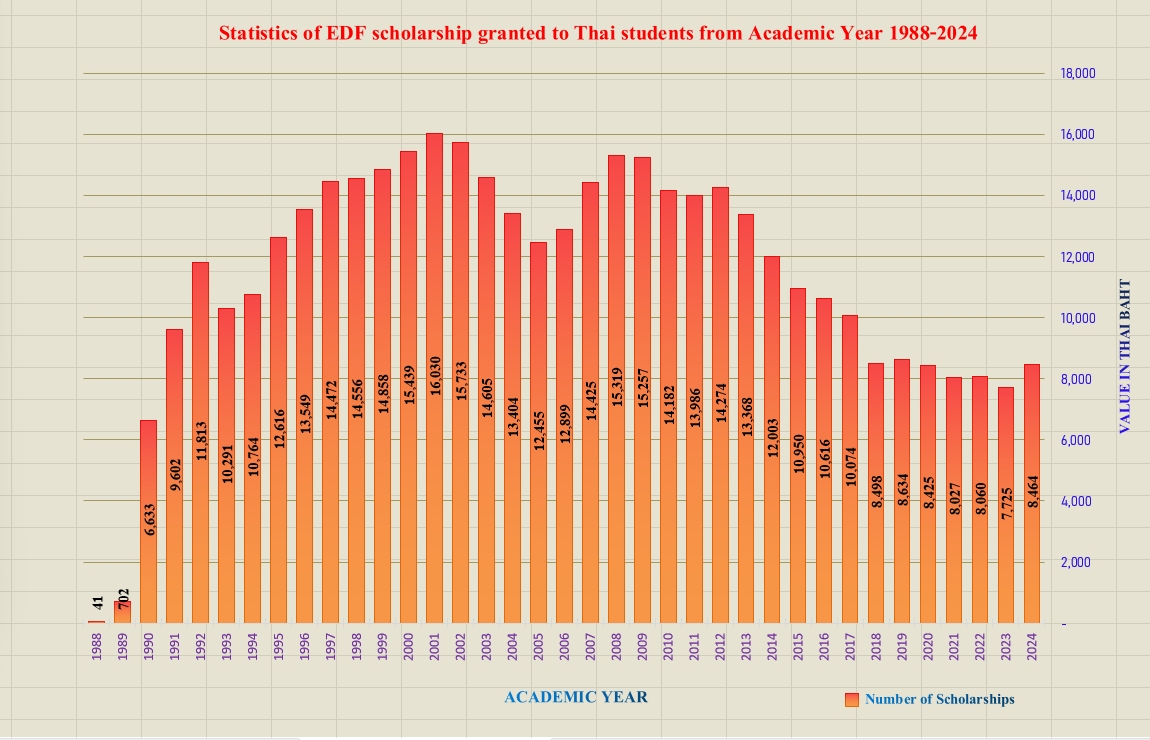
Pictures tell the truth
| Pictures of Thai rural students commuting to school | |
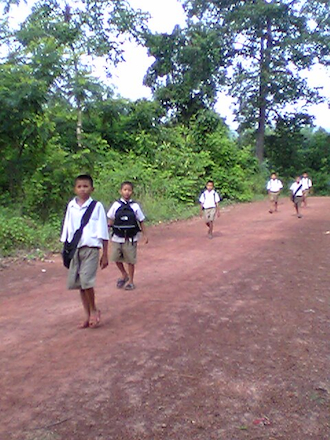 |
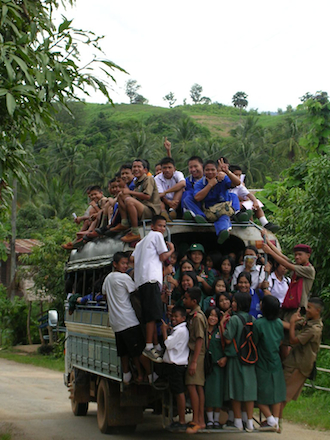 |
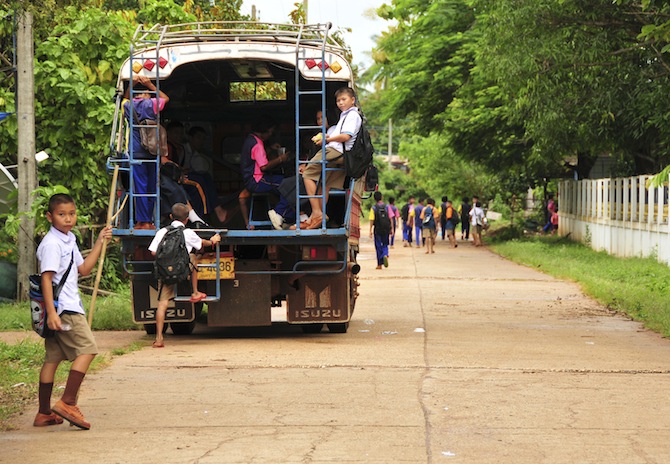
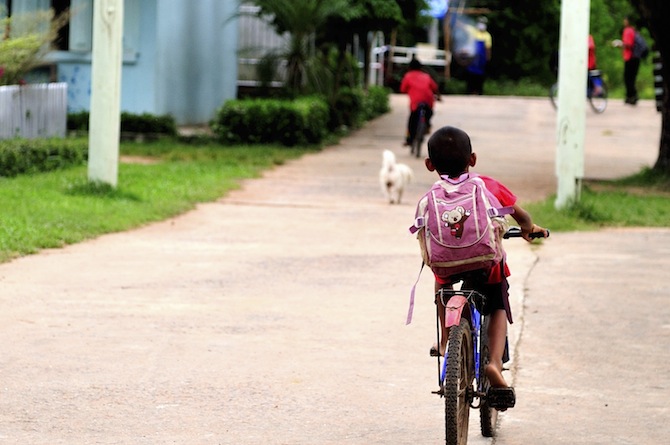
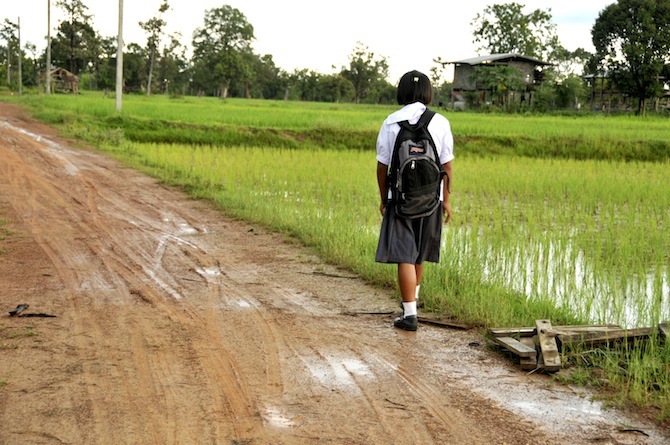 Pictures of Thai rural student's living condition
Pictures of Thai rural student's living condition
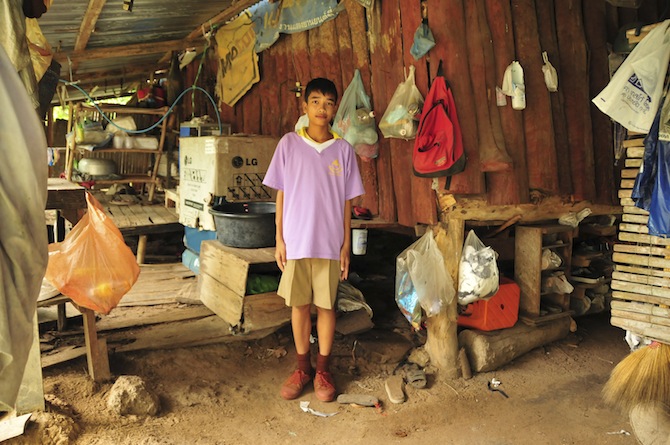
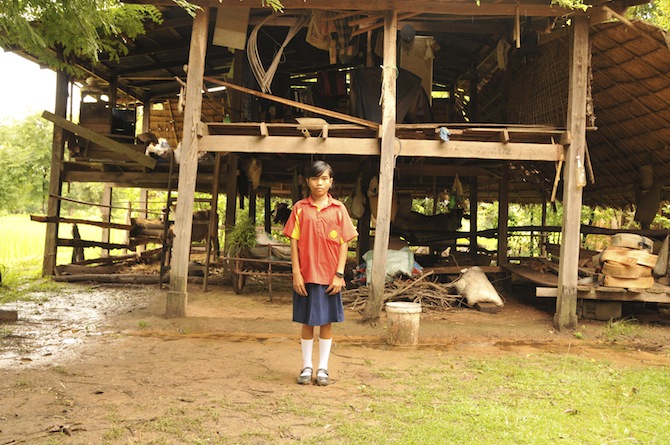 Pictures of Thai rural student's lunch time
Pictures of Thai rural student's lunch time
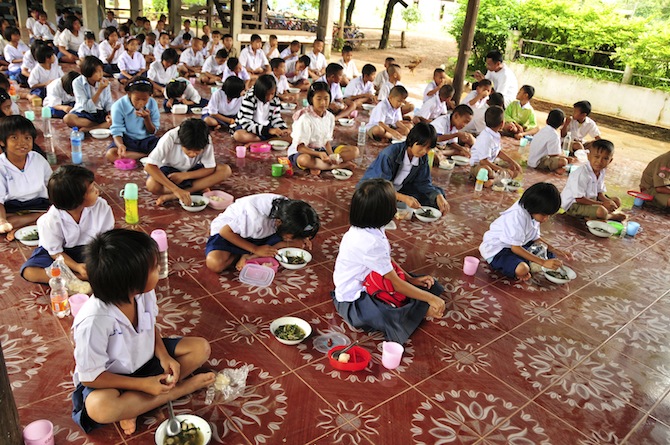
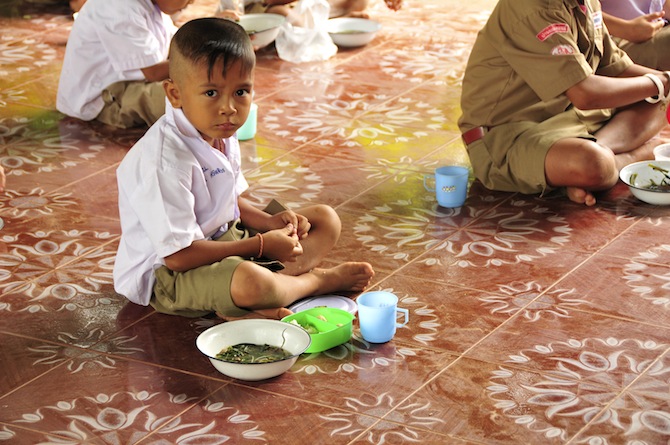
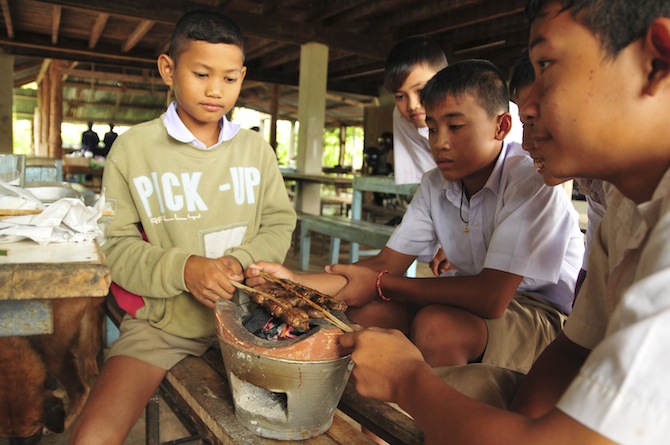
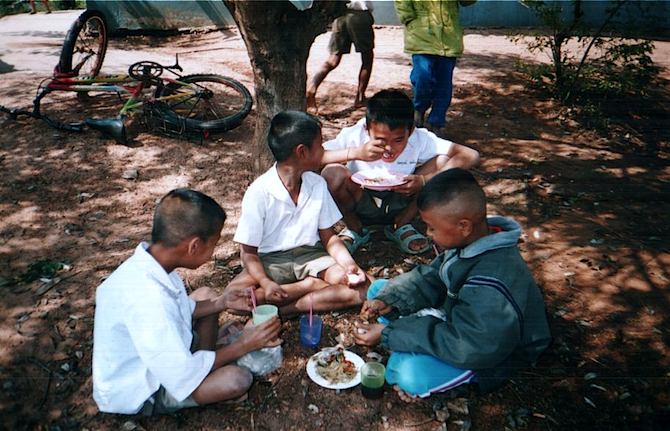
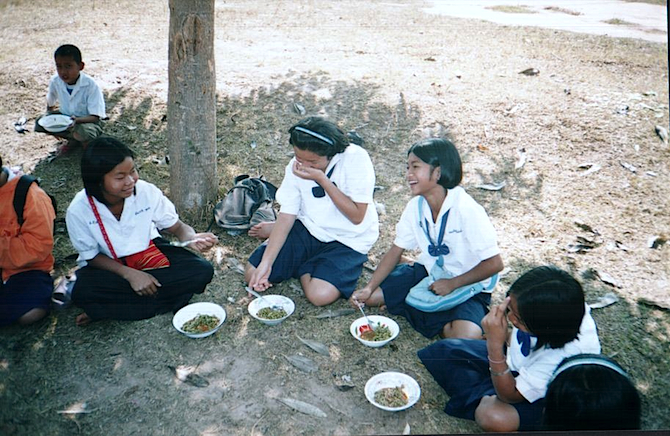 Pictures of Thai rural school's classroom
Pictures of Thai rural school's classroom
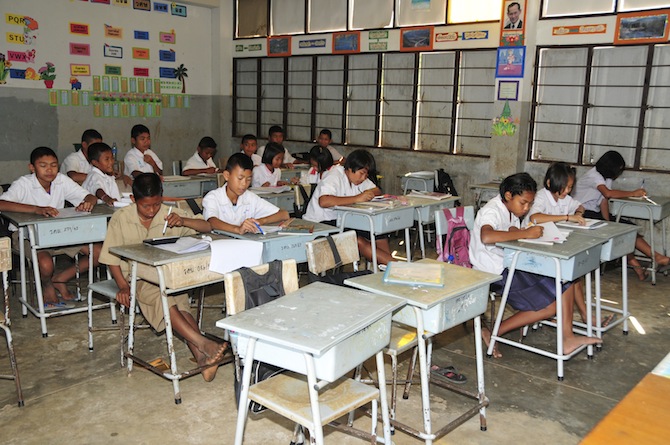
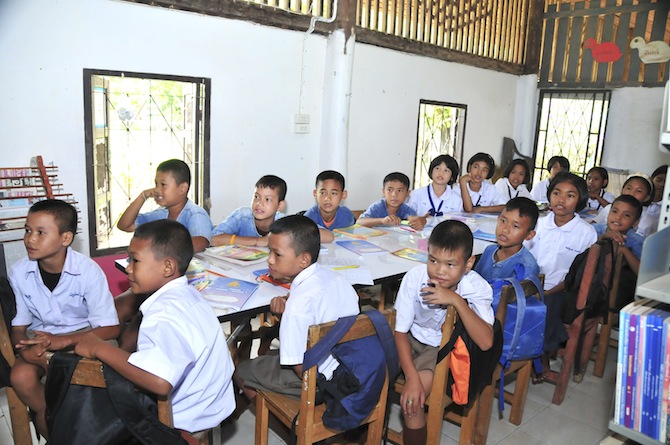
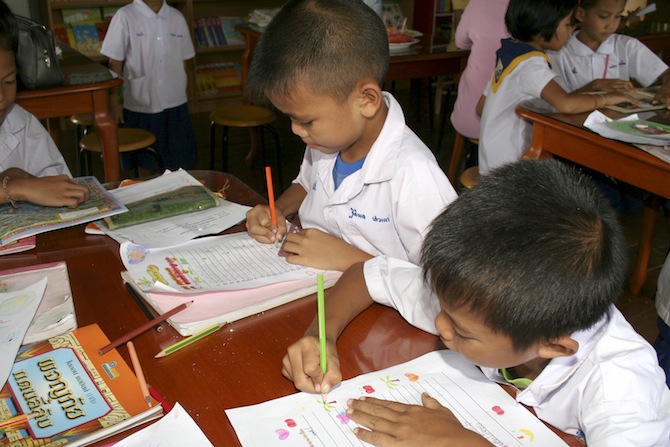
THEIR FUTURE IS IN YOUR HANDS
SUPPORT A STUDENT
